What You Need To Know About Landmines in Cambodia
Large parts of Cambodia remain blighted by landmines, a haunting legacy from decades of war. Here we explain the safety issues posed by these unexploded devices, and how visitors can aid efforts to tackle this scourge.
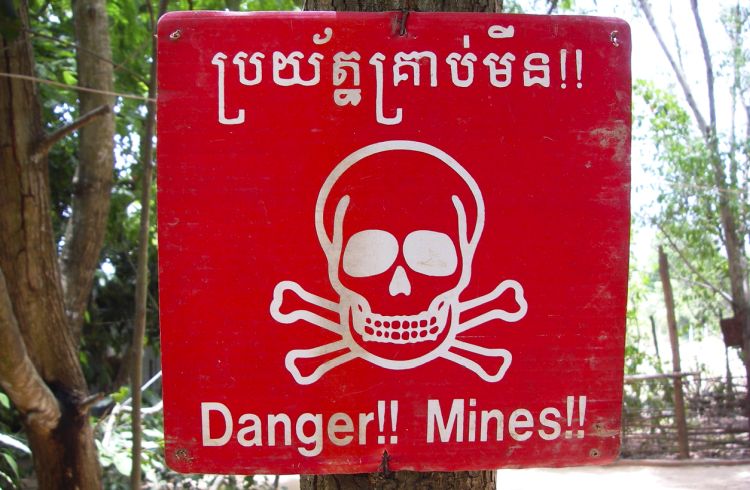 Photo © Getty Images/BeyondImages
Photo © Getty Images/BeyondImages
While Cambodia has made significant progress as a nation since the end of its long civil war in 1998, it remains deeply impacted by this horrific era – not least due to the millions of unexploded landmines which hide beneath its earth. In the past four decades, more than 60,000 people have been killed by these devices, which each year also cause dozens of serious injuries. But fortunately, travelers to Cambodia are able to assist in the effort to combat this crisis.
- Why are there so many landmines in Cambodia?
- Where are Cambodia’s landmines located?
- How are landmines being removed?
- How can tourists stay safe?
- How can travelers help Cambodia’s landmine crisis?
Why are there so many landmines in Cambodia?
In 1975, a revolutionary party named the Khmer Rouge launched a reign of destruction under the leadership of dictator Pol Pot. After storming national capital Phnom Penh and seizing control of Cambodia, they began working towards a ghastly goal of rewinding this country back to the “Year Zero”.
To achieve this, Pol Pot’s men would destroy Cambodia’s social, spiritual, and financial frameworks, sending everyone back to the fields to create an agrarian society. Those who dissented were executed. Many more were killed by the Khmer Rouge just for being viewed as a threat to their campaign, especially educated Cambodians with the potential to become leaders, such as writers, politicians, monks, academics, and journalists.
In the space of just four years, the Khmer Rouge caused the deaths of about 1.7 million Cambodians. They were defeated in 1979 by Vietnamese forces, who caused them to flee into the jungle. But the Khmer Rouge did not dissolve until 1999, by which time all of its leaders were either dead or imprisoned, including Pol Pot who passed away under house arrest in 1998. Yet even to this day they continue to take lives via the landmines they, and other warring factions, planted all over Cambodia.
Where are Cambodia’s landmines located?
Despite years of concerted clean-up efforts, there still is more than 386 mi2 (1,000 km2) of Cambodia which has significant amounts of either unexploded landmines or cluster munitions. These devices have been detected in almost every region of Cambodia.
But they are most heavily concentrated in the country’s far northwest, close to and along its border with Thailand. This area of Cambodia was a key battleground in the 1980s amid fighting between the Khmer Rouge, Thai forces, and Vietnamese military. Although that is among Cambodia’s least-populated regions, there are also smaller patches of landmines near national capital Phnom Penh and tourist hub Siem Reap, home to world famous temple complex Angkor Wat.
Further complicating this matter are thousands of square kilometers suspected of being home to landmines, but not yet confirmed to be affected. Not only do landmines pose a threat to human safety, but they also hinder Cambodia’s economy and society because massive areas of land which are perfect for farming go unused due to being confirmed or suspected of having unexploded ordinances.
How are landmines being removed?
Since the early 1990s, more than four million unexploded landmines and munitions have been cleared across Cambodia. Despite this extraordinary effort, carried out by the Cambodian Government, local volunteers, and foreign NGOs, up to six million such devices are still estimated to lurk within its borders.
Although Cambodia almost certainly will not reach its stated aim of eradicating all such landmines by 2025, this effort continues to gather pace. There are more than 1,000 people employed to search for unexploded ordinances, most of whom are locals.
Their most common method is by wielding a metal detector and slowly, methodically walking through tracts of land identified as likely hosting landmines. Although they wear helmets and protective suits, it remains very dangerous and sometimes deadly work.
This is why one landmine-clearing NGO now instead uses rodents. This charity, called APOPO, trains giant African rats to use their incredibly powerful sense of smell to detect landmines in the countryside. They are so adept at this that the rats can dart through a field quickly, covering far more ground in a day than can a human with a metal detector. Just one of its rats, called Magawa, was able to clear almost 40 acres of land during its career.
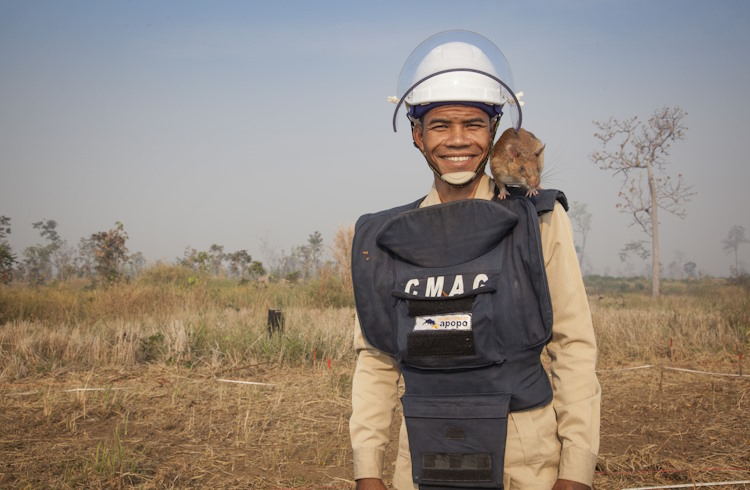
How can tourists stay safe?
It is a very rare occurrence for a visiting traveler to be injured or killed by a landmine in Cambodia. As detailed above, most of these unexploded devices are scattered through rural areas, well clear of popular tourist attractions. Travelers sticking to Cambodia’s tourist trail have no reason to be concerned with landmines.
But tourists who wish to stray from that well-beaten path, and into Cambodia’s countryside, should first do some research. At a minimum, they should consult the many online maps which identify the areas of Cambodia most heavily littered with landmines.
Another option would be to contact your home country’s embassy in Cambodia, or one of the country’s landmine clearing NGOs, before exploring the country’s natural splendor. However, in doing this, you are bothering people whose time could be better served. Perhaps the best advice is to stick to the more-traveled places and reserve your wilderness wandering for a different country.
How can travelers help Cambodia’s landmine crisis?
NGOs involved in landmine clearing, like APOPO, rely greatly on generosity from members of the public. You can send money to them directly via their websites, with APOPO even offering the option of adopting one of its so-called “hero rats”.
Or you can do as I did and donate in person while visiting the fascinating APOPO Visitor Center in Siem Reap. This facility has several guided tours each day, during which participants learn about the ongoing effort to rid Cambodia of landmines.
Then, visitors can watch one of APOPO’s hero rats in action, as it scurries across a field trying to detect the scent of explosive chemicals. Visitors can also help APOPO by getting food or drinks on site and buying unique souvenirs from its gift shop.
Related articles
Simple and flexible travel insurance
You can buy at home or while traveling, and claim online from anywhere in the world. With 150+ adventure activities covered and 24/7 emergency assistance.
Get a quote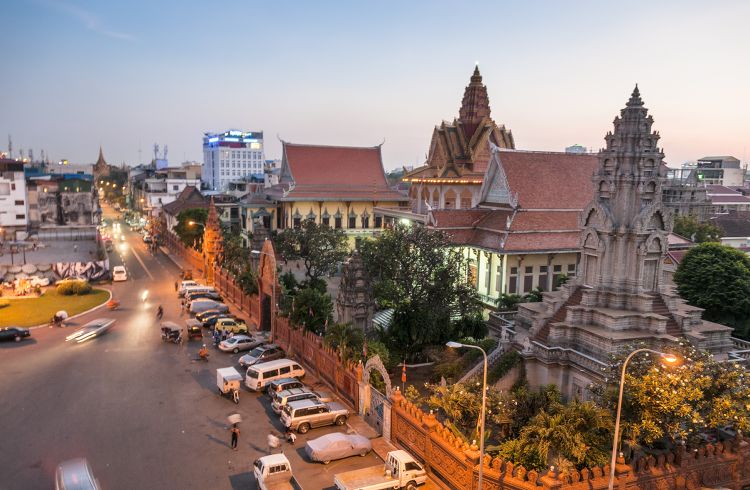
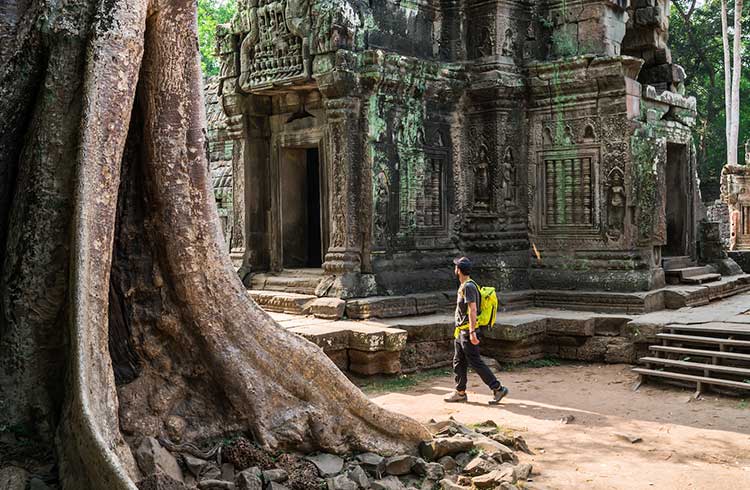
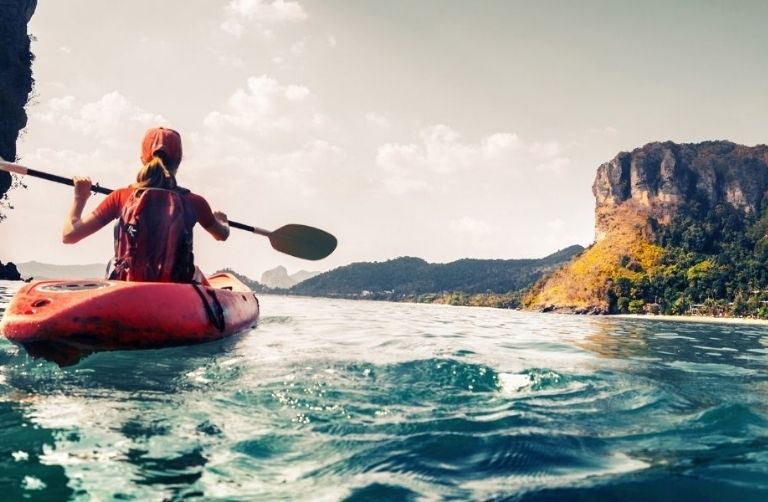
5 Comments
i will be going to thailand next month. doing research on land mines.was there2 years ago.please contact me there,please.
I lost my brother to a landmine in Cambodia.
Take Care when there
Just visited Aki Ra landmine museum. An eventful experience and mind opener. It seems that the Cambodian people are forgotten by the world with regard to the land mines that still remain. How is it Europe was cleaned of land mines after WWII reasonably quickly yet here we are well into 2019 and a very oppressed country over so many years still cannot walk freely within its borders. Too many casualties still continue. Where is the care for these world Citizens? It’s one thing to have an accord for no more manufacturing of land mines but we really need more responsibility by global citizens to remove this rubbish from Cambodia. It seems that manpower is required.
Well over 20 years ago I was in Cambodia and visited various landmine museums. At the time it was said it would take 10 years to clear the mines. 10 years later they said the same. Today they are still saying the same. Cambodia gets millions of dollars in foreign aid, mainly from America. I dont believe these figures any more. It;s just a game played by the authorities to garner more cash every year. Even if it's true they should clear up the detritus of war themselves. I fould out very quickly how corrupt these people are. Don't belive all this, and if you go to visit you will find the North West is strictly out of bounds to tourists so all you will see is a head office in a provincial town. I am very sceptical about this story.
Ending the war is not ending the war, without making restitution as being responsible for leaving deadly land mines etc, even in prime farmlands...where even children become the direct and indirect victims.
Zaccheaus' is our example of true turnaround upon repenting of evils done.